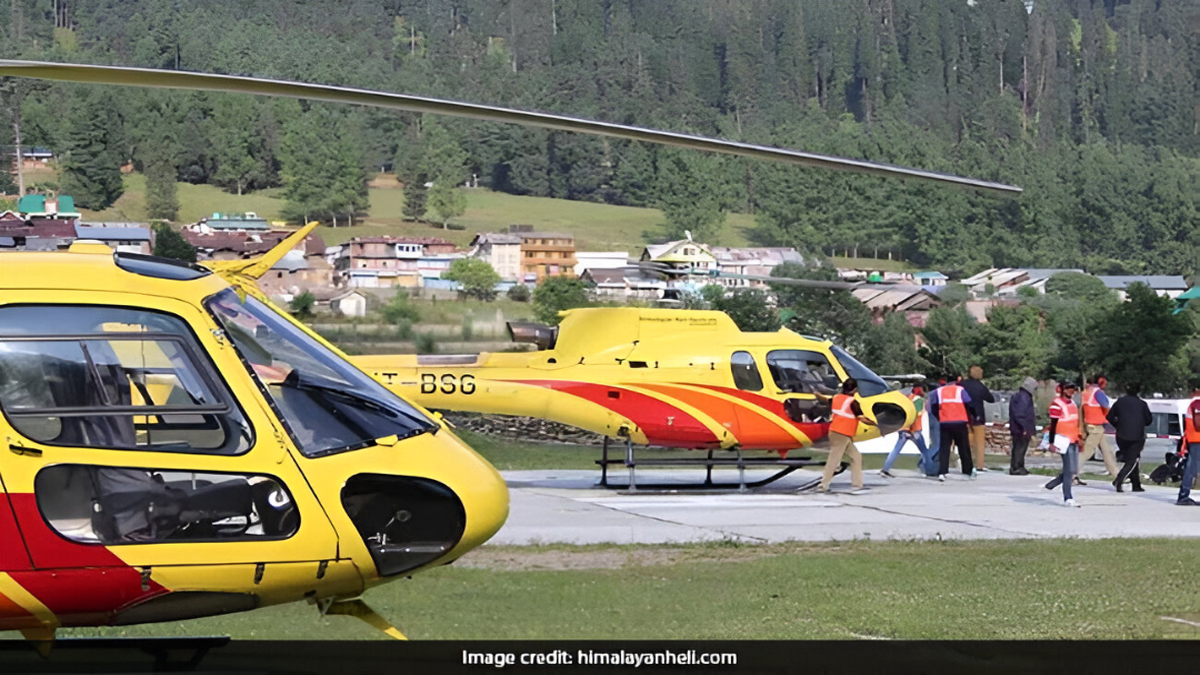Now Reading: No Helicopters for Amarnath Pilgrims This Year: Shrine Board
-
01
No Helicopters for Amarnath Pilgrims This Year: Shrine Board
No Helicopters for Amarnath Pilgrims This Year: Shrine Board

In a significant development for the annual Shri Amarnath Yatra, the Shrine Board has announced that there will be no helicopter services available for pilgrims this year. This decision follows a directive from the Jammu and Kashmir government, which has declared all routes leading to the revered cave shrine as “No Flying Zones” from July 1 to August 10, 2025.
The move marks a notable shift in the arrangements for the pilgrimage, which typically sees thousands of devotees opting for helicopter services to reach the high-altitude shrine, easing the strenuous trek. The Shri Amarnathji Shrine Board (SASB) has advised all pilgrims planning to undertake the Yatra to prepare for the journey on foot or by utilizing traditional means such as ponies and palkis (palanquins).
Enhanced Security Measures Cited as Primary Reason
The primary reason behind this unprecedented decision is a heightened focus on security. Following a recent terror attack in Pahalgam, which resulted in casualties, the authorities have implemented stringent measures to ensure the foolproof safety of pilgrims. High-level security meetings, including those chaired by the Union Home Secretary, led to the declaration of the pilgrimage routes as no-fly zones. This ban extends to all types of aerial platforms and devices, including Unmanned Aerial Vehicles (UAVs), drones, and balloons, with exceptions only for medical evacuations, disaster management, and surveillance by security forces.
While the decision prioritizes the safety and security of the pilgrims, it has drawn mixed reactions. Jammu and Kashmir Chief Minister Omar Abdullah, for instance, has voiced concern, calling the move “absurd” and suggesting it might send a “wrong message” about the prevailing situation in the region. He emphasized that helicopter services have long facilitated the pilgrimage for many, particularly senior citizens and those with medical conditions.
Implications for Pilgrims and Alternatives
The absence of helicopter services will undoubtedly impact the logistics and accessibility of the Yatra for many. Pilgrims who previously relied on the convenience of air travel will now need to undertake the entire journey on foot or by traditional modes. The two main routes to the Amarnath cave are:
- Pahalgam Route: This is the longer, traditional route, approximately 48 km, and typically takes 3-5 days to complete. It is known for its scenic beauty and gradual ascents, making it suitable for pilgrims who prefer a more extended and immersive experience.
- Baltal Route: This is a shorter but steeper route, about 14 km, which can be completed in 1-2 days. While more challenging physically, it is a quicker option for those with limited time.
Both routes will have provisions for ponies and palkis, which are traditionally used to ferry pilgrims and their luggage. The SASB has assured that all necessary arrangements, including accommodation at base camps, medical facilities, and food (langars), will be in place to support the pilgrims throughout their journey.
Pilgrims are strongly advised to undertake thorough physical preparation for the trek, pack appropriate warm and waterproof clothing, and carry essential medical supplies. Registration for the Yatra remains mandatory, and pilgrims must possess valid ID proof and a compulsory health certificate.
The Amarnath Yatra, a revered annual pilgrimage to the naturally formed ice lingam of Lord Shiva, is scheduled to commence on July 3 and conclude on August 10, 2025. While the decision to suspend helicopter services presents a new challenge, authorities reiterate that it is a necessary step to ensure a secure and peaceful pilgrimage for all devotees.









